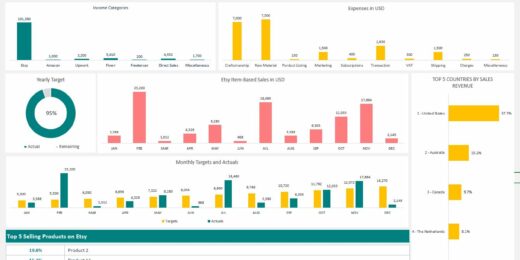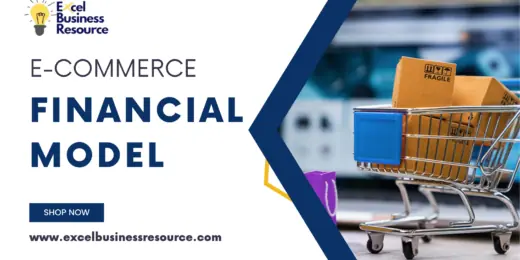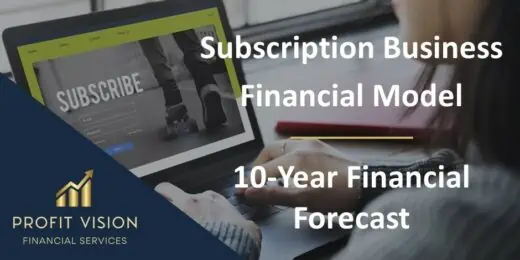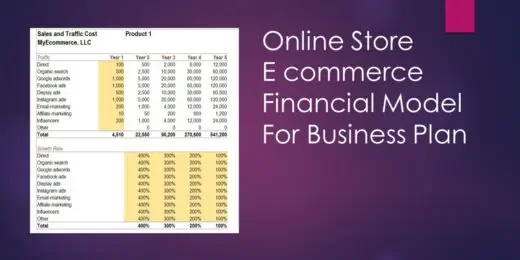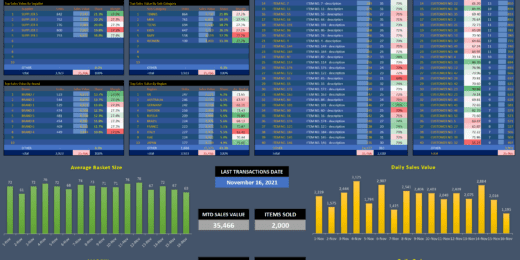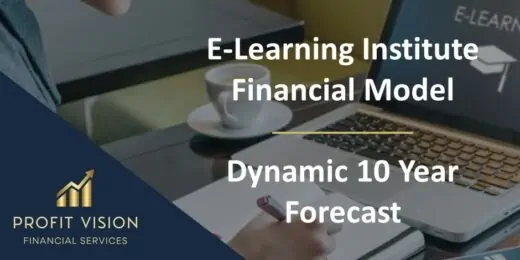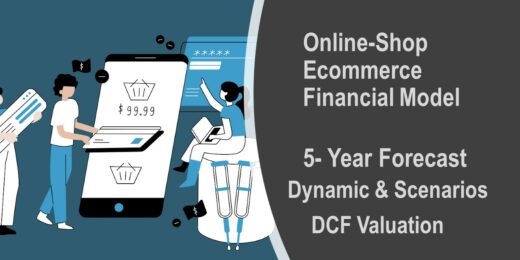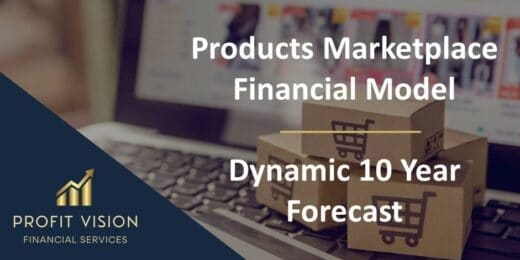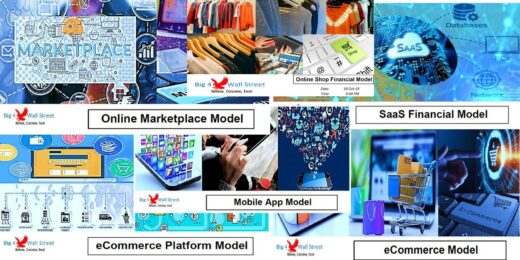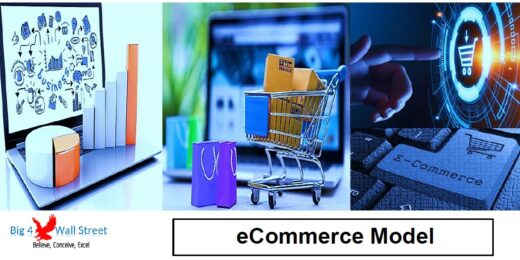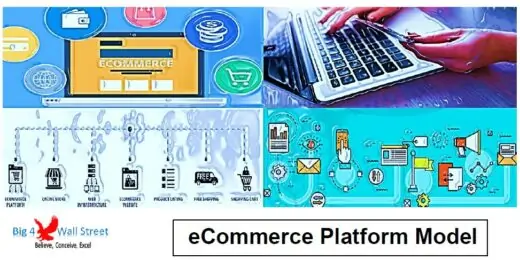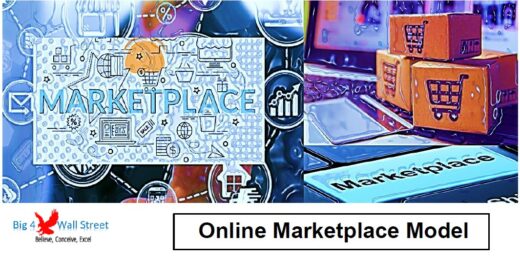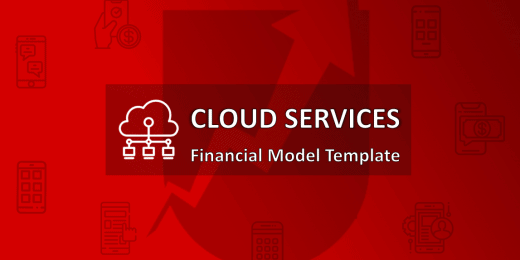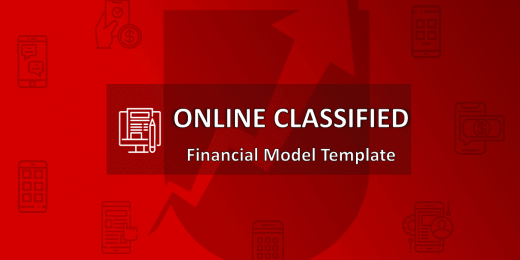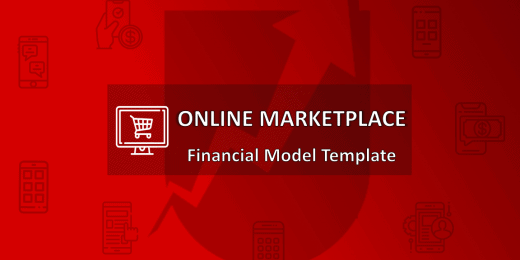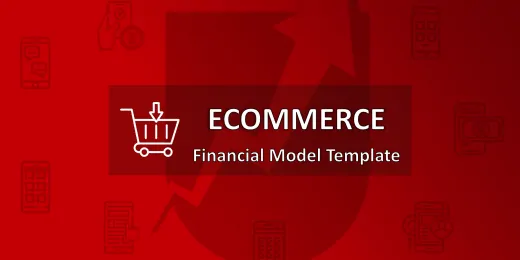E-Commerce & Web Shops
Transform your e-commerce aspirations into tangible success with eFinancialModels.com. Embrace the power of expert financial modeling to navigate the complexities of the digital marketplace. Let our templates be the cornerstone of your strategic financial planning.
Online Store Sales Dashboard Excel Template
Equips businesses with actionable insights for optimizing sales strategies tailored…
Etsy Seller Excel Template
Excel Bookkeeping Template for Etsy Shop Owners: Efficiently Monitor and…
EdTech Financial Model and Valuation Template
Empower your EdTech startup with our comprehensive Financial Model, including,…
B2C eCommerce Financial Model & Valuation Model
Tailored ecommerce financial model Model for startups. Forecast revenue, integrate…
eCommerce | Online Retail Financial Model and Valuation
Discover the eCommerce - Online Retail Company Financial Model and…
Subscription Box Financial Model – Up to 72 Months
Test many variables in this financial model for a subscription…
Subscription Business – 10 Year Financial Model
Financial Model providing a 10-year financial plan for a startup…
Amazon Financial Model With Forecasting and Valuations
Financial Model of Amazon (Ticker: AMZN) with forecasting and valuations.…
eCommerce Monthly 3-Statement Business Plan with Return Calculations
A model to prepare and analyze a start-up or existing…
Etsy & Ebay Store Financial Model Excel Template
Etsy & Ebay Store Budget Template There's power in Cash…
Product + Subscription Financial Model
Build a strategy for adding recurring revenues services to your…
2nd-Hand Antique Marketplace 10-Year DCF Financial Model
This model provides a full 10-year financial model for a…
MARKET PLACE 3 Statement Financial Model Template – 5 Years Projections
Introducing the Future-Proof Market Place Financial Model Template: Unlock Your…
E-Learning Institute Financial Model – Dynamic 10 Year Forecast
Financial Model providing a dynamic up to 10-year financial forecast…
Online Business Financial Models Bundle
A collection of six Online Business Financial Models offered at…
Online Shop Ecommerce Startup Financial Model & DCF Valuation
This is a dynamic and advanced DCF valuation model of…
Online Products Marketplace – Dynamic 10 Year Financial Model
Financial Model providing a dynamic up to 10-year financial forecast…
Integrated Healthcare Platform – 3 Statement Financial Model with 5 years Monthly Projection
Integrated Healthcare Platform Business Plan Model is a perfect tool…
Restaurant Aggregator and Food Delivery Business Financial Model Template
Restaurant Aggregator and Food Deliver Business Plan Model is a…
E-Commerce Startup Financial Model – 5 Year Business Plan
5-Year Financial Model providing advanced financial & planning analysis for…
Online Clothing Wholesaler – 5 Year Financial Model
Advanced Financial Model presenting a 5 Year Business Plan for…
Online Marketplace Business (New or Existing) Financial Projection 3 Statement Model
User-friendly 3 statement 5 year rolling financial projection Excel model…
E-Com Variance Tracker Financial Model Excel Template
Check Our E-Commerce Variance Tracker Financial Projection. Sources & Uses,…
White Labeling Financial Model Excel Template
Shop White Labeling E-Commerce Budget Template. Use this Excel to…
Private Labeling Financial Model Excel Template
Get Private Labeling E-Commerce Financial Model Template. Allows you to…
Wholesaling E-Commerce Financial Model Excel Template
Get the Best Wholesaling E-Commerce Financial Projection Template. Allows you…
eCommerce 5-Year Financial Model Template
Any organization looking to sell products online can benefit from…
Dropshipping Financial Model Excel Template
Shop Dropshipping E-Commerce Pro Forma Projection. Based on years of…
C2B Financial Model Excel Template
Download Customer To Business E-Commerce Pro Forma Projection. Allows you…
C2C Financial Model Excel Template
Purchase Customer To Customer E-Commerce Financial Model. Excel Template for…
B2C Financial Model Excel Template
Try Business To Customer E-Commerce Budget Template. Use this Excel…
B2B Financial Model Excel Template
Check Business To Business E-Commerce Budget Template. Excel Template for…
Book Subscription Box Financial Model Excel Template
Check Our Book Subscription Box Financial Projection Template. Spend less…
Surprise Subscription Box Financial Model Excel Template
Download Surprise Subscription Box Budget Template. Creates 5-year financial projection…
Digital Media Financial Model Excel Template (Fully-Vetted and Ready-to-Use)
Fully-Vetted Comprehensive Digital Media Financial Model + Video Series
Cloud Services Financial Model Excel Template (Fully-Vetted and Ready-to-Use)
Fully-Vetted Comprehensive Cloud Services Financial Model + Video Series +…
Online Classified Financial Model Excel Template (Fully-Vetted and Ready-to-Use)
Fully-Vetted Comprehensive Online classified Financial Model + Video Series +…
Online Marketplace Financial Model Excel Template (Fully-Vetted and Ready-to-Use)
Fully-Vetted Comprehensive Online Marketplace Financial Model + Video Series +…
Delivery/Takeaway Restaurant Business Financial Projection Model
User-friendly 3 statement 5 year rolling financial projection Excel model…
Startup or Existing Subscription Business Financial Projection 3 Statement Model
3 statement 5 year rolling financial projection Excel model for…
E-Commerce Software Financial Model Excel Template
Get Your E-Commerce Software Pro-forma Template. Excel Template for your…
Web/Mobile App Startup/Existing Business Financial Projection 3 Statement Model
3 statement 5 year rolling financial projection Excel model for…
eCommerce Financial Model Excel Template (Fully-Vetted and Ready-to-Use)
Fully-Vetted Comprehensive eCommerce Financial Model + Video Series
Digital Product Marketplace Model
The digital product marketplace model prepares a financial plan in…
E-Commerce 3 Statement Financial Projection Model with Valuation
Highly versatile and user-friendly Excel model for the preparation of…
Dropshipping Financial Model Excel Template
Purchase Dropshipping Financial Model Template. Creates 5-year financial projection and…
Online Clothing Store Financial Model Excel Template
Impress bankers and investors with a proven, solid Online Clothing…
SaaS Model Templates – Small Bundle Version
Get 3 SaaS financial model templates for SaaS startups with…
SaaS Model Templates – Big Bundle Version
Get 5 SaaS financial model templates for SaaS startups with…
E-com Simple Financial Model Excel Template
Get Your Simple E-Commerce Pro Forma Projection. There's power in…
E-Commerce & Web Shops: Maximizing Your Reach

In the ever-evolving terrain of e-commerce & web shops, maximizing your reach transcends mere online presence. E-commerce businesses demand a strategic fusion of financial acumen and digital savvy. It is where the power of financial modeling becomes an invaluable asset. For entrepreneurs, startup founders, and business mavens venturing into the digital marketplace, financial model templates are more than just tools; they are the compass guiding you through the complex financial landscape of online commerce.
In this insightful journey, we'll explore how integrating these financial model templates into your e-commerce strategy can be a game-changer, enhancing your ability to connect with a global audience and significantly amplifying your market reach. You can better understand your business's financial health, forecast future trends, and make data-driven decisions that propel your online store to new heights.
An Overview of E-Commerce & Web Shops
E-commerce & web shops are integral to the digital economy, but they cater to different aspects of online business. E-commerce, or electronic commerce, refers to the broader concept of buying and selling goods and services online. It includes a broad spectrum of online business endeavors. A web shop, also known as an online store or e-shop, is a specific type of website that focuses solely on the retail aspect of e-commerce. They are dedicated platforms where businesses sell products or services to consumers.
E-commerce businesses involve not just the transactional process of buying and selling but also include other aspects such as online marketing, automated data collection systems, electronic data interchange (EDI), electronic funds transfer, inventory management systems, online transaction processing, and supply chain management. E-commerce activities can occur on various platforms, not limited to dedicated websites. It includes online marketplaces (like Amazon or eBay), social media platforms, and even email or mobile apps.
A web shop hosts a dedicated website, and the entire user experience – from browsing products to checkout – happens within this website. While it has an international customer base, it often caters to specific regions or countries, significantly smaller or medium-sized enterprises, due to logistics and shipping considerations. It is primarily geared towards B2C transactions, where the end consumers directly interact with the business's digital storefront to purchase.
In general, e-commerce businesses and web shops, though often used interchangeably, have distinct nuances. While all web shops are a part of e-commerce, not all e-commerce activities are confined to web shops.
How E-Commerce Works
E-commerce has become crucial to the modern economy due to its convenience, efficiency, and broad reach. It offers a vast array of opportunities for both large and small enterprises. Here’s an overview of how e-commerce works:
- Online Presence: Businesses establish an online presence through a website or an app where they display their products or services.
- Product Showcase: Products or services are listed with descriptions, images, and prices. Advanced e-commerce systems include customer reviews and ratings.
- Order Processing: Customers select products, add them to a shopping cart, and complete the purchase through an online checkout.
- Payment Processing: Payments are made via electronic methods such as credit cards, debit cards, online wallets, or other digital payment systems.
- Order Fulfillment: The business processes the order. It involves selecting, packaging, and shipping the product or providing a service.
- Delivery: Physical goods are delivered through courier services, while digital products or services are made available via downloads or online access.
- After-Sales Service: Customer service is provided for after-sales inquiries, returns, or complaints.
E-commerce businesses can be classified according to four categories:
- E-commerce business models
- E-commerce revenue models
- E-commerce website types
- E-commerce website technologies
E-Commerce Business Models
E-commerce has revolutionized the way businesses interact with each other and with consumers. Understanding the different e-commerce business models, like B2C versus B2B, among others, is crucial for entrepreneurs, startup founders, business owners, and finance professionals to make informed decisions. Let's delve into these models:
- Business-to-Consumer, or B2C, is the most popular e-commerce business model. Businesses use the Internet to sell goods and services to customers directly. Examples include Amazon and Walmart's online platforms. B2C businesses often focus on marketing, customer experience, and pricing strategies to attract and retain consumers.
- Business-to-Business, or B2B: In this model, businesses sell products or services to other businesses. B2B e-commerce platforms often cater to specific industry needs and require a different approach to sales and marketing, focusing on long-term relationships and bulk ordering. Examples of B2B e-commerce platforms are Alibaba and ThomasNet.
- Business-to-Government (B2G): B2G involves businesses selling products or services to governments and public sector agencies. This model often includes tenders and contracts; companies must meet specific criteria and regulations to participate. A notable example is the U.S. government's GSA Advantage program.
- Business-to-Business-to-Consumer (B2B2C): This model combines B2B and B2C for a complete product or service transaction. A business sells a product or service to another business before it reaches the consumer. For example, a manufacturer sells to a retailer and then sells to the final consumer.
- Consumer-to-Consumer (C2C): In this model, consumers sell directly to other consumers, often through platforms facilitating these transactions. eBay and Craigslist are prime examples. Key factors include ease of use, security, and the ability to provide a trusted transaction platform.
- Consumer-to-Business (C2B): Here, individuals offer products or services to businesses. It can include freelance work, crowdsourcing, or influencer marketing. Platforms like Upwork and Fiverr facilitate this model by connecting individual service providers with businesses.
- Direct-to-Consumer (D2C): D2C companies sell directly to consumers, bypassing traditional retailers or middlemen. This model allows for greater control over brand, customer experience, and margins. Examples include Warby Parker and Dollar Shave Club.
Each model has its unique challenges and opportunities. The choice of model depends on the target market, product or service type, and the overall business strategy. For financial professionals in e-commerce, understanding these models is vital for analyzing market potential, competitive landscape, customer behavior, and revenue projections. It's also essential for developing financial models and analyses that reflect the specific dynamics of the chosen e-commerce model.

E-Commerce Revenue Models
E-commerce revenue models are crucial for businesses to understand and implement effectively in today's digital marketplace. Each model offers distinct advantages and challenges.
- Dropshipping: Dropshipping is a streamlined retail business wherein the seller accepts customer orders but does not keep goods sold in stock. Instead, in a dropshipping model, the retailer acts as a middleman, transferring the orders and their shipment details directly to the manufacturer, a wholesaler, or another retailer, who then ships the goods directly to the customer. This model reduces the overhead and risk of holding inventory, enabling sellers to offer a wide range of products without significant upfront investment in stock.
- Freemium: The freemium model in e-commerce is a pricing strategy where essential services or products are provided free of charge, while more advanced features or premium services are offered at a cost. This model is designed to attract a large user base with free services, expecting a certain percentage to find value in the premium features and opt to pay for them. It's commonly used in digital services and software products.
- Private Labeling: This model involves selling products under one's own brand name, but a third party manufactures those products. In private labeling, a retailer contracts a manufacturer to create a unique product to sell exclusively. This approach allows the retailer to create a distinct brand identity and offer unique products without the expense of operating a manufacturing facility.
- Rent and Loan: This revenue model involves lending or renting products to customers for a specified period in exchange for a fee. It is popular in industries where customers prefer temporary access to goods such as fashion, tools, and technology rather than owning them outright. This model can attract customers who seek flexibility, lower costs, or short-term usage without a purchase commitment.
- Subscription: The subscription model is based on recurring payments made by customers in exchange for continued access to a product or service. This model ensures a consistent revenue stream and customer engagement over time. It is widely used for digital services like streaming platforms, software as a service (SaaS), and physical goods like subscription boxes for food, beauty products, or books.
- White Labeling: White labeling involves purchasing products from a manufacturer and selling them under one's brand name. Unlike private labeling, where the product is unique and made exclusively for a retailer, in white labeling, the same product can be sold by multiple retailers under different brand names. This model is popular among retailers who want to expand their product offerings without investing in new product development.
- Wholesaling: In the wholesaling model, goods are purchased in bulk from manufacturers or distributors and then resold in smaller quantities to retailers or directly to end consumers at a markup. Wholesalers typically sell their products at lower unit prices due to the high volume of purchases. This model is standard in B2B transactions but can also be applied in B2C contexts, particularly in the case of bulk sales to consumers.
Choosing a suitable model for e-commerce ventures, especially startups and SMEs, can significantly impact their growth and sustainability trajectory. Each of these models has its own set of financial and operational considerations. Businesses should carefully assess their resources, market demands, and long-term goals before choosing the best model with their strategy.

E-Commerce Website Types
E-commerce has revolutionized the way businesses operate and interact with their customers. This digital marketplace offers various platforms, each catering to different business needs and consumer preferences.
- Individual Brand websites are digital storefronts dedicated to a single brand, offering a focused and brand-centric shopping experience. These sites often provide detailed product information, brand storytelling, and personalized customer service.
- Marketplaces like Amazon or eBay, aggregate multiple sellers in one platform, offering a wide range of products from various brands and individual sellers. They excel in providing diverse choices and competitive pricing.
- Online Retailers are digital versions of traditional retail stores. They typically carry products from multiple brands, often focusing on specific niches or categories, like electronics or clothing.
- Social Media E-commerce leverages social networking platforms to facilitate direct sales. Platforms like Instagram and Facebook have integrated shopping features, enabling businesses to sell directly through their social media profiles, thus blending social engagement with commerce.
Each type serves a unique role in the e-commerce ecosystem, catering to different business strategies and customer needs.

E-Commerce Website Technologies
E-commerce website technologies have evolved significantly, offering a diverse range of platforms and solutions to meet the varying needs of online businesses. These technologies facilitate a seamless and efficient online shopping experience for customers while providing businesses with robust operations management tools.
- Mobile Commerce: Mobile commerce, or m-commerce, is a subset of e-commerce that involves buying and selling goods and services through wireless handheld devices such as smartphones and tablets. This technology is designed to accommodate the increasing trend of mobile internet usage, providing a user-friendly shopping experience on small screens.
- Voice Commerce: Voice commerce represents a cutting-edge approach to online shopping, where customers use voice commands to search for products, make purchases, and interact with virtual assistants like Amazon's Alexa, Google Assistant, or Apple's Siri. This technology leverages natural language processing and machine learning to understand and process spoken requests, making the shopping experience more interactive and convenient. Voice commerce is beneficial for routine purchases or when hands-free interaction is preferred. As voice recognition technology advances, it's becoming an increasingly important tool for businesses seeking to provide a more accessible and innovative shopping experience.
- Web Commerce: Web commerce, often referred to as traditional e-commerce, is the original form of online shopping, conducted through websites accessed via web browsers on computers or mobile devices. This technology provides a comprehensive online shopping experience, featuring detailed product pages, customer reviews, secure checkout processes, and various payment options. As the backbone of e-commerce, web commerce continues to evolve with advancements in web technologies, security, and user interface design.
E-commerce website technologies enhance the consumer experience and provide businesses with powerful tools for managing and expanding their online presence, which is crucial for success in the digital marketplace.

How to Maximize Your Reach with E-commerce & Web Shops
Maximizing your reach in the e-commerce and webshop sector requires a multi-faceted approach, leveraging technology, marketing strategies, customer service excellence, and financial planning. Here's a detailed exploration of the essential steps:
Build or Choose a Responsive E-Commerce Website
A responsive e-commerce website is crucial for attracting and retaining customers. Design an intuitive layout that makes navigation effortless for users. It includes a precise categorization of products, an easy-to-use search bar, and a seamless checkout process. Website loading time should be under 0.1 seconds. Fast loading speeds enhance user experience and positively influence
Drive Traffic Through Search Engine Optimization (SEO)
SEO is vital for increasing visibility and attracting organic traffic to your website. Ensure your website's content, including product descriptions, blog posts, and metadata, is optimized for search engines and user experience. Google search rankings can be achieved through optimized images, efficient coding, and reliable hosting solutions. Incorporate specific long-tail keywords in your product pages. While less competitive, these keywords are more likely to attract qualified leads who are closer to a purchase decision.
Provide Excellent E-Commerce Customer Service
Superior e-commerce customer service can help you stand out from the competition. To provide excellent e-commerce customer service, focus on creating a seamless and responsive experience, prioritizing customer needs and expectations. Provide precise and detailed product information and offer multiple, easy-to-navigate support channels like live chat, email, and phone support. Rapid response times, personalized assistance, and proactive problem-solving are crucial, as they demonstrate a commitment to excellent e-commerce customer service. Additionally, leveraging customer feedback to improve service offerings continuously and implementing a flexible return and refund policy can significantly enhance customer trust and loyalty.
Strengthen Social Media Campaigns
Social media is a powerful tool for e-commerce businesses. Collaborate with influencers and other brands to expand your reach. It can include sponsored content, co-branded products, or shared promotions. Use targeted Pay-Per-Click (PPC) advertising on platforms like Facebook, Instagram, and Google to reach potential customers.
Utilize Financial Modeling for Enhanced Market Penetration
Financial modeling plays a pivotal role in strategic planning. Budget allocation templates determine the most effective marketing budget allocation across various channels. Evaluate the return on investment for different marketing strategies and adjust your tactics accordingly. Prepare for multiple market conditions by modeling sensitivity analyses, helping you make informed decisions.
In conclusion, maximizing your reach in the e-commerce and webshop sectors requires a holistic approach. These strategies attract a wider audience and foster customer loyalty, leading to sustained business growth. Remember, in the dynamic world of e-commerce, agility and continuous improvement are vital to staying ahead of the competition.

Conclusion
In conclusion, effectively utilizing financial model templates for e-commerce and web shops is a strategic approach that empowers entrepreneurs, startup founders, and business owners to optimize their operations and expand their reach. These templates streamline the financial planning and analysis process and provide valuable insights into revenue streams, cost structures, and potential growth opportunities. By adopting these sophisticated tools, businesses can make well-informed decisions, forecast future trends, and adapt to market dynamics more efficiently.
In an increasingly competitive digital marketplace, the right financial modeling resources are not just a convenience but necessary for achieving sustainable growth and maximizing your online business's potential. Embrace these tools to navigate the complexities of e-commerce with confidence and precision, setting a solid foundation for success and longevity in the digital economy.



